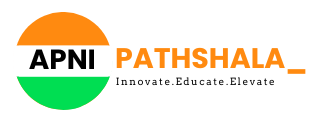Empowering Skills: The Heart of Education and Growth

Explore the empowering skills that are at the heart of education and personal growth.
Transforming Education: Embracing DIY Learning

Apni pathshala Transforming Education: Embracing DIY Learning Education is no longer confined to classrooms and textbooks. A revolution is brewing, fueled by a powerful concept: DIY learning. This approach empowers students to take charge of their educational journey, fostering curiosity, independence, and a lifelong love of learning. Let’s delve into the world of DIY learning and explore its transformative impact on education Beyond the Textbook: Taking Ownership of Learning Traditional education often follows a teacher-centered approach, where students passively receive information. DIY learning flips the script. It encourages students to become active participants in their learning, taking ownership of their educational goals and exploring topics that pique their interest. Imagine a student fascinated by marine biology. Instead of simply reading about it in a textbook, a DIY approach might involve watching documentaries, visiting virtual aquariums, conducting online research, or even starting a blog dedicated to ocean conservation. DIY Learning in Action: A World of Possibilities The possibilities for DIY learning are endless. Let’s explore some real-world examples: A student passionate about coding: Instead of relying solely on pre-made coding tutorials, they might explore online communities, experiment with different coding languages, and build their own simple games or apps. A budding historian: They could delve deeper into a historical period that fascinates them by researching online archives, creating timelines, or even interviewing relatives about historical events they’ve witnessed. A future entrepreneur: They might participate in online entrepreneurship workshops, research successful businesses, and develop a business plan for their own innovative product or service. The Role of Educators in a DIY Learning Landscape Educators aren’t rendered obsolete in the world of DIY learning. Their role transforms from a dispenser of knowledge to a guide and facilitator. Here’s how educators can support DIY learning: Empower Student Choice: Provide students with opportunities to choose topics for projects or research papers, fostering a sense of ownership over their learning. Curate Resources: Guide students to reliable online resources, libraries, and databases, ensuring their exploration is grounded in credible information. Offer Coaching and Support: Be a sounding board for students’ ideas, provide constructive feedback, and offer guidance throughout their DIY learning journey. Create a Collaborative Environment: Encourage students to share their learning experiences with their peers, fostering a collaborative community where knowledge is exchanged freely. Why DIY Learning Matters The benefits of DIY learning extend far beyond just content knowledge. Here’s how it empowers students: Boosts Curiosity and Motivation: DIY learning allows students to explore subjects that spark their natural curiosity. This intrinsic motivation fuels a deeper level of engagement and a hunger for knowledge. Develops Self-Directed Learning Skills: DIY learning equips students with the skills to manage their time, research effectively, and navigate the vast ocean of information available online. They learn to become independent learners, a crucial skill for success in a rapidly changing world. Enhances Problem-Solving and Critical Thinking: DIY projects often involve solving real-world problems or tackling challenges. This fosters critical thinking skills as students analyze information, evaluate solutions, and adapt their strategies when needed. Nurtures Creativity and Innovation DIY learning encourages students to think outside the box. They can explore different learning methods, experiment with new ideas, and come up with creative solutions to problems they encounter. Builds Confidence and Self-Esteem: Completing DIY projects fosters a sense of accomplishment and boosts confidence. Students see themselves as capable learners and experience the satisfaction of achieving goals they set for themselves. A Future of Empowered Learners DIY learning isn’t just a trend; it’s a paradigm shift in education. By fostering self-directed learning, critical thinking, and a passion for exploration, DIY learning equips students with the skills they need to thrive in the 21st century. They graduate not just with academic knowledge but also with the ability to learn independently, solve problems creatively, and adapt to a world brimming with new challenges and opportunities. Frequently Asked Questions Isn't DIY learning just unstructured and chaotic? DIY learning doesn’t mean students are left to their own devices. It requires strategic planning and goal setting. Educators play a crucial role in guiding students towards reliable resources and providing structure while still allowing for exploration and independent learning. How can parents support DIY learning at home? Parents can be fantastic partners in the DIY learning journey. They can encourage their children’s interests, assist them in finding suitable online resources, and create a supportive environment where exploration and learning are valued. What if a student gets stuck or overwhelmed with a DIY project? by encouraging them to break down the project into smaller steps, brainstorm solutions with classmates, or seek additional resources online or at the library Isn't DIY learning isolating? What about social interaction and collaboration? DIY learning doesn’t have to be a solitary pursuit. Students can collaborate on projects, share their findings online or through presentations, and participate in online communities dedicated to specific interests. This fosters teamwork and communication skills, crucial for success in any career path. References: The Rise of DIY Learning: How Students Are Taking Charge of Their Education [invalid URL diy learning blog ON gettingSMART getting-smart.org] This article from GettingSMART explores the growing trend of DIY learning and its impact on student engagement and motivation. DIY Learning: A Practical Guide for Parents and Teachers [invalid URL diy learning parents] This website by PBS LearningMedia offers practical tips and resources for parents and teachers who want to support DIY learning in their children or students. How to Foster Self-Directed Learning in the Classroom [invalid URL self direction in learning ON edutopia.org] This Edutopia article provides educators with valuable strategies for fostering self-directed learning in the classroom, a key component of DIY learning. Created by Pranav Gorathe
